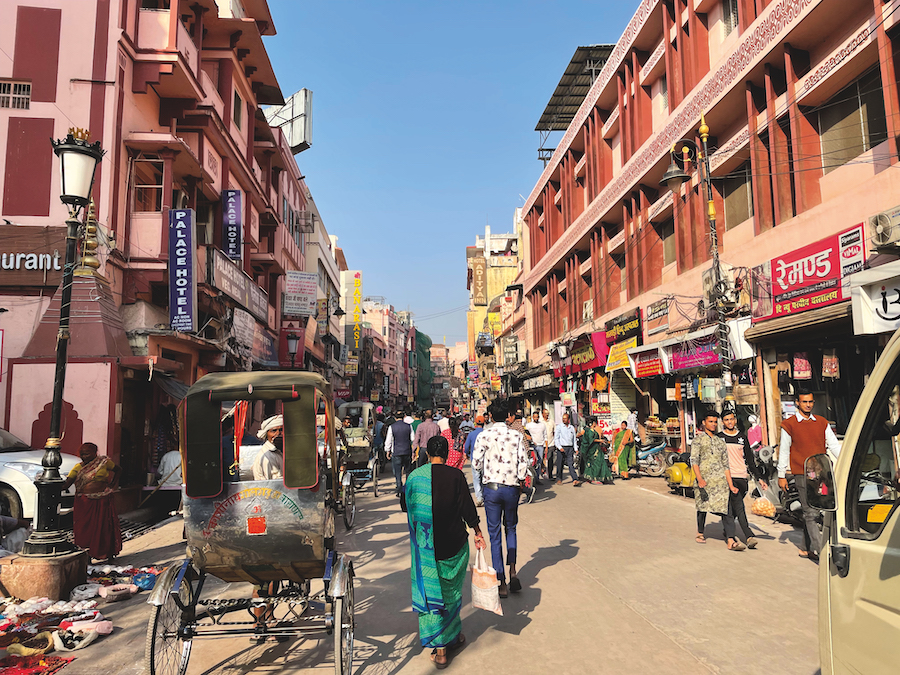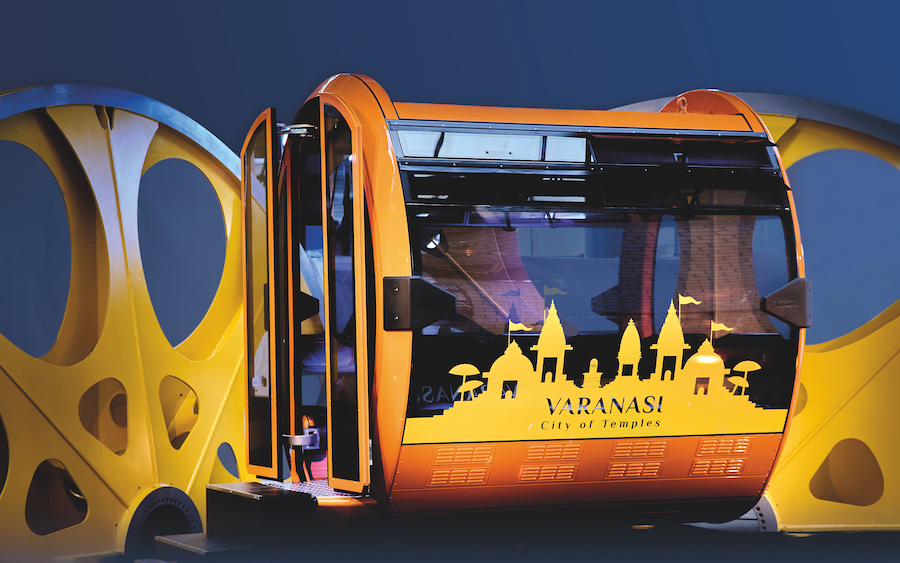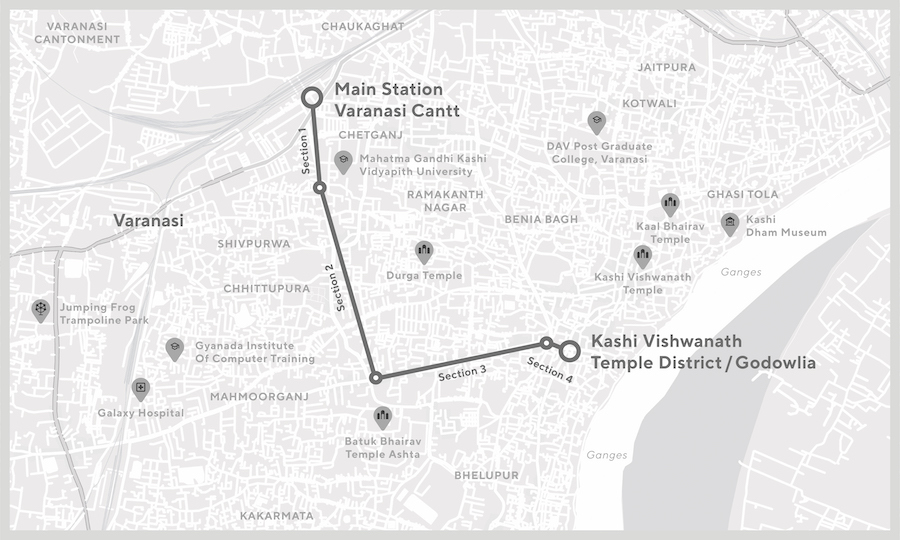
Cities, SI Urban 2/2023
VARANASI: URBAN TRANSPORT REDEFINED – WITH COMFORT ABOVE STREETS OF INDIA
The city of Varanasi, located in the state of Uttar Pradesh and known as India‘s spiritual capital, is embracing a forward-thinking transportation solution: the construction of an urban cable car.
Varanasi, with over 2,000 temples, attracts pilgrims and tourists from all over the world, leading to increased traffic on the already congested city streets. The situation is further exacerbated by the central transportation hub, Varanasi Cantt Railway Station.
The solution to these transportation challenges lies in elevated mobility. The cable car will alleviate the existing transportation system and make public transportation more attractive and efficient.
The cable car route will extend from Varanasi Cantt Railway Station through the Vidyapeeth and Rath Yatra stations to the Godowlia Chowk temple district.
The panoramic cabins
in the “Design by Porsche Design Studio“.

Symbolic Groundbreaking
The planning phase of this project has already been completed, and construction officially began on March 24, 2023, with a symbolic groundbreaking ceremony attended by Prime Minister Narendra Modi.
The project is being implemented in collaboration between the renowned ropeway company BARTHOLET MASCHINENBAU AG and Vishwa Samudra Engineering, acting on behalf of the National Highways Logistics Management Ltd.
The project was tendered by the government as a Public-Private Partnership (PPP), and the decision was made to use the proven Swiss technology of BARTHOLET. It will be operated by Vishwa Samudra Ropeways, which will ensure the operation for a period of 15 years after the cable car is completed.
Establishing the Connection
With a total length of 3,730 meters, forming an L-shape, the cable car will establish the connection from the main railway station to Godowalia Chowk station. This impressive infrastructure will be divided into two intercepts, each with two sections, connecting a total of five stations.
Along the route, 29 towers will be erected, with heights ranging from 7 to 46 meters. Passengers will be transported in 148 panoramic cabins designed by the “Porsche Design Studio.“
These cabins can accommodate ten passengers each and are wheelchair accessible. The cable car can transport 3,000 passengers per hour, and travel at a speed of 6 meters per second along the cable.
In March 2023, the vision of this cable car project was further solidified when a delegation from India had the opportunity to inspect the cabins at the headquarter of BARTHOLET.
The enthusiastic approval of the delegation members hints at a promising future for this pioneering project.

Relieving Road Traffic
The planned operating hours for the Varanasi cable car will be 16 hours per day. This promises sustainable relief for traffic congestion and better connectivity to the heavily frequented temple district.
Once again, India demonstrates its ability to develop innovative solutions to address the growing transportation challenges in its cities.
The urban cable car in Varanasi marks an exciting journey into the future of mobility. With a short project timeline of 2.5 years, it is set to commence operations in May 2025.
Technical data:
10-PASSENGER GONDOLA LIFT SECTION 1 + 2
| Length | 2.290 m |
| Travel Speed | 6 m/s |
| Number of cabins | 90 |
| Number of supports | 18 |
| Capacity | 3.000 p/h |
| Motor power | 560 kW |
Technical data:
10-PASSENGER GONDOLA LIFT SECTION 3 + 4
| Length | 1.440 m |
| Travel speed | 6 m/s |
| Number of cabins | 58 |
| Number of supports | 11 |
| Capacity | 3.000 p/h |
| Motor power | 415 kW |







